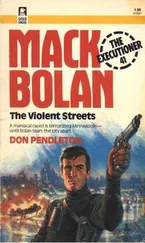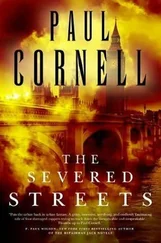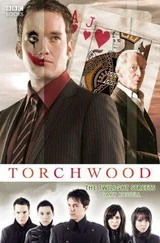Guilty or innocent, living or dead, deranged or competent-the winnowing process removes 64 of the original 200 defendants, or nearly 30 percent, before a single case is ever brought to court. And of the 136 men and women remaining:
Eighty-one will accept plea agreements prior to trial. (Eleven of those defendants will plead to premeditated, first-degree murder, 35 to second-degree murder, 32 to manslaughter, and 3 to lesser charges.)
Fifty-five homicide defendants will risk trial before a judge or jury. (Of that number, 25 defendants will be acquitted in jury trials. Twenty of the remaining 30 defendants will be found guilty of first-degree murder, 6 of second-degree murder, and 4 of manslaughter.)
Add 30 trial convictions to 81 pleas and the cumulative deterrent to murder in Baltimore is evident: 111 citizens have been convicted for committing an act of homicide.
By the reckoning of this particular year, the chance of actually being convicted of a crime after being identified by authorities is about 60 percent. And if you factor in those unsolved homicides in which there are no arrests, the chance of being caught and convicted for taking a life in Baltimore is just over 40 percent.
All of which is not to say that this unlucky minority then suffers punishment commensurate with their crime. Of the 111 defendants convicted in this year’s homicides, 22 men and women-20 percent of the total-will be sentenced to less than five years’ incarceration. Another 16 defendants-14 percent of the total-will receive sentences of less than ten years in prison. Given that Maryland’s parole guidelines generally call for prisoners to serve about a third of their sentences, it can be said that three years after they committed their crimes, fewer than 30 percent of the Baltimore homicide unit’s Class of 1988 is still behind prison walls.
Prosecutors and detectives understand the statistics. They know that even with the best cases-those that a state’s attorney is willing to bring before a jury-the chance of success is only three in five. As a result, those prosecutions that are marginal, those in which there is any indication of justifiable self-defense, those in which the witnesses are unreliable or the physical evidence is ambiguous-all these cases soon fall by the side of the road, becoming dismissals or weak pleas.
But not every case that goes to plea is necessarily weak. In Baltimore, plea bargains can be had on reasonably strong cases-cases that no defendant and his attorney would dare risk taking to trial in the suburbs of Anne Arundel or Howard or Baltimore County. Yet in the city, prosecutors know that such cases, when brought to trial, are likely to result in acquittals.
The difference is, quite simply, Rule Number Nine.
The operant logic of a Baltimore city jury is as fantastical a process as any other of our universe’s mysteries. This one is innocent because he seemed so polite and well spoken on the stand, that one because there were no fingerprints on the weapon to corroborate the testimony of four witnesses. And this one over here is telling the truth when he says he was beaten into a confession; we know that, of course, because why else would anyone willingly confess to a crime if he wasn’t beaten?
In one particularly notable decision, a Baltimore jury found a defendant innocent of murder charges but guilty of assault with intent to murder. They believed the testimony of the eyewitness, who saw the defendant stab the victim in the back on a well-lit street, then run away to save himself. But they also believed the medical examiner, who explained that of all the stab wounds, a thrust to the chest had ultimately killed the victim. The jurors reasoned that they couldn’t be absolutely sure that the defendant stabbed the victim more than once. Presumably, some other enraged assailant could have wandered by afterward, picked up the knife and finished the job.
Juries do not like to argue. They do not like to think. They do not like to sit for hours at a time, wading through evidence and testimony and lawyers’ arguments. And in a homicide detective’s view, a criminal jury resists its obligation to judge another human being. It’s an ugly, painful business, after all, this process of labeling people murderers and criminals. Juries want to go home, to escape, to sleep it off. Our legal system prohibits a guilty verdict when there is reasonable doubt about a defendant’s culpability, but in truth, juries want to doubt, and in the stress of the jury room, all doubts become reasonable justification for acquittal.
Reasonable doubt is the weak link in every prosecutor’s chain and, with a complex case, the doubts multiply. Consequently, most of the battle-scarred veterans in the state’s attorney’s office prefer a straightforward, one- or two-witness homicide: It’s an easier argument to present and an easier argument for a jury to accept. They believe your witnesses or they don’t, but either way, you haven’t asked them to think very hard or to pay attention for very long. But the more developed case file-the one that a detective built over weeks and months, the one that presents a mountain of not-so-glaringly-obvious evidence, the one that requires the prosecutor to subtly piece the case together like a puzzle-it’s that kind of case on which a criminal jury can wreak real havoc.
Because in Baltimore, at least, the average juror doesn’t want to spend time contemplating the inconsistencies in a defendant’s statement, or the complex web of testimony that systematically destroys an alibi, or the discrepancies between a medical examiner’s testimony and a defendant’s self-defense claim. It’s too complicated, too abstract. The average juror wants three upstanding citizens to say that they were eyeball witnesses to the crime and another two who can assure them of the killer’s motivation. Throw in a recovered murder weapon, a few print hits and a positive DNA match and then, by God, you’ve got a jury ready to mete out some punishment.
To a detective, however, it’s the circumstantial prosecutions that often represent the best police work, and for that reason Rule 9B has profound meaning. In theory, the dunkers take care of themselves in court. But the best cases-the kind a cop takes pride in-always do seem to get the worst juries.
As with every other part of the criminal justice machine, racial issues permeate the jury system in Baltimore. Given that the vast majority of urban violence is black-on-black crime, and given that the pool of possible jurors is 60 to 70 percent black, Baltimore prosecutors take almost every case into court with the knowledge that the crime will be seen through the lens of the black community’s historical suspicion of a white-controlled police department and court system. The testimony of a black officer or detective is therefore considered necessary in many cases, a counterweight to the young defendant who, following his attorney’s advice, is wearing his Sunday best and carrying the family Bible to and from court. That the victims are also black matters less; after all, they’re not around to set such a good example in front of the jurors.
The effect of race on the judicial system is freely acknowledged by prosecutors and defense attorneys-black and white alike-although the issue is rarely raised directly in court. The better lawyers, whatever their color, refuse to manipulate jurors through racial distinctions; the others can do so with even the most indirect suggestions. Race is instead a tacit presence that accompanies almost every panel of twelve into a Baltimore jury room. Once, in a rare display, a black defense attorney actually pointed to her own forearm while giving closing arguments to an all-black panel: “Brothers and sisters,” she said, as two white detectives went out of their minds in the back row of the gallery, “I think we all know what this case is about.”
Читать дальше












